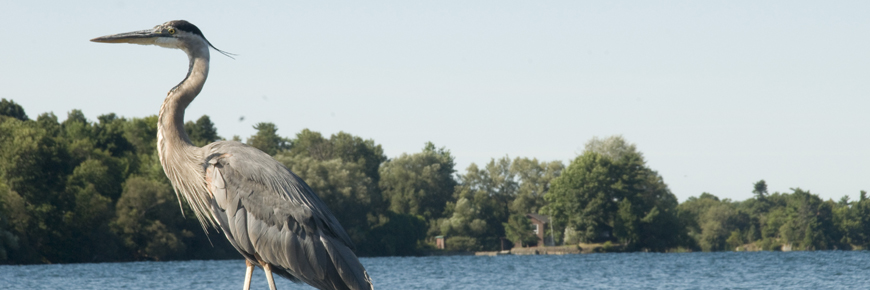
Bird watching
Thousand Islands National Park
The forests, shorelines, wetlands, and aquatic environments of Thousand Islands National Park are home to a diversity of bird species. In fact, in one day 102 different species were identified on Grenadier Island. The temperature-moderating effects of the St. Lawrence River allow northern species like the common loon to mingle with southern species like the turkey vulture. So bring a pair of binoculars or borrow a pair from an interpreter at the visitor centre and get a glimpse into the wild world of birds.
Parks Canada and Thousand Islands National Park endorse the American Birding Association's Code of Ethics and we encourage all visitors to do the same. Protecting significant landscapes and species is a cornerstone of the national parks program and, as such, some birding practices are not appropriate here. To minimize stress on the bird species found within the park we ask visitors to:
- Avoid flushing or cornering birds
- Not use recordings or other methods of attracting birds
- Use designated trails and footpaths
We value our visitors! Please visit our Visitor Safety page to ensure a safe visit.
Keep wildlife wild
It is an offense to lure, disturb, chase or molest wildlife in a National Park; penalties can range as high as $2,000 or six months in jail.
Please do not feed the wildlife
- Poor health and premature death can result from wildlife consuming food other than their natural food supply.
- When fed, animals like raccoons and deer become habituated to human contact and are at higher risk of becoming aggressive. Keeping a safe distance from all wildlife and viewing them in a respectful manner will reduce the likelihood of a negative wildlife encounter.
- Raccoons are potential carriers of rabies. If you see a raccoon behaving aggressively, please report the incident to park staff. Learn more about raccoon rabies on the Ontario Ministry of Natural Resources' Website.
Wild plants
Resist the temptation to pick wildflowers, cattails, berries, mushrooms or any other plant. Plant matter and natural objects such as antlers and bones are part of the natural food supply for wildlife.
Pets
Even the best behaved dog can run into trouble when off leash. Keeping your dog on a leash protects both your dog and any other animal that you may encounter. Wild animals can become aggressive when confronted and other dogs may not be as friendly as yours. Additionally, other visitors may be uncomfortable with or afraid of dogs.
- Date modified :